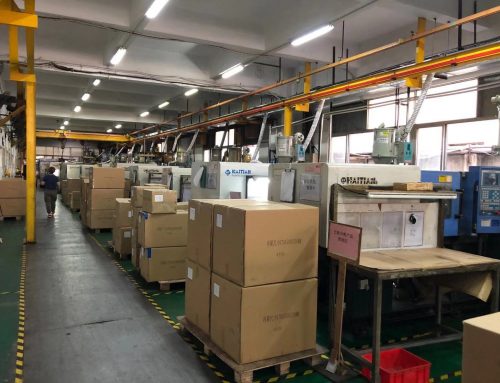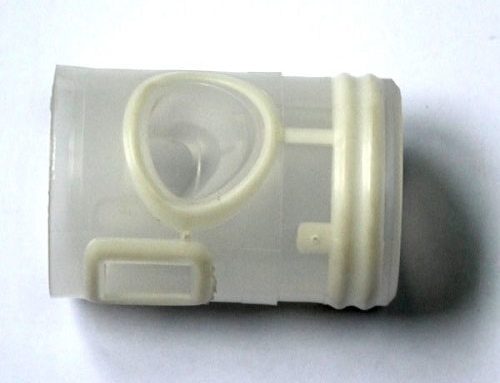Abs plastics play an important role in electronics industry, machinery industry, transportation, building materials, toy manufacturing and other industries due to their high mechanical strength and good comprehensive performance. Especially for large cabinet structures and stressed parts as well as decorative parts that need to be plated. Based on years of practical experience, our company has carried out a simple analysis of abs plastic molding.

abs plastic molding
(1) Moisture content of ABS plastic
ABS plastics are hygroscopic and sensitive to water. Drying and preheating before processing can not only eliminate surface flashing bubbles and silver filaments caused by water vapor, but also contributes to plasticization of plastics, reduces stains and moiré on the surface of parts.
Control moisture content of Abs raw materials below 0.13%. Drying conditions before abs plastic molding are: dry climate in winter, oven temperature between 75-80℃, baking 2-3 hours. Summer rainy days, oven temperature between 80-90℃, baking 4- 8 hours. If part is to have a special gloss or part itself is complicate, lengthen baking time to 8-16 hours.
Due to presence of traces of water vapor, surface of workpiece is often overlook. In order to prevent ABS after drying from absorbing moisture again in hopper, it is better to change machine hopper to a hot air hopper dryer. But enhance hopper in humidity monitoring to prevent occasional interruption of material overheating during production.
(2) Control of temperature of abs plastic molding machine
Relationship between injection temperature and melt viscosity of ABS plastics is different from other amorphous plastics. When melting temperature increases, melting of ABS actually decreases very little, but once melting temperature reaches plasticizing temperature (suitable processing temperature range, such as 220-250℃). If temperature continues to rise blindly, it will lead to heat resistance. Thermal degradation of ABS is not high, melt viscosity increases, abs plastic molding will be more difficult, and mechanical properties of parts will also decrease.
Although injection temperature of abs plastic mold making is higher than injection temperature of polystyrene and other plastics, it does not have a more relaxed heating range as latter. Some injection molding machines with poor temperature control often find yellow or brown coke particles embedded in parts when producing a certain number of ABS parts, which is difficult to remove with new materials. Reason is that abs contains butadiene. Plastic particles will degrade and carbonize under high temperature for a long time. Since high temperature operation may cause problems with ABS, it is necessary to control furnace temperature of each section of barrel.
Applicable furnace temperatures for different types and compositions of ABS are also different. For example, maintain temperature of plunger furnace at 180-230℃, and temperature of screw furnace at 160-220℃. It is particularly worth noting that ABS is sensitive to various process factors due to its high processing temperature. Therefore, temperature control of front end of barrel and nozzle is very important. Practice has proved that any production will reflect subtle changes in these two parts. The greater temperature change, the more defects such as welds, poor gloss, flash, sticking, and discoloration.
3) Control of abs plastic molding machine pressure
Viscosity of ABS melt is higher than that of polystyrene or modified polystyrene, so injection pressure is higher. Of course, not all ABS components require high pressure. For small, simple, thick parts, low injection pressures can be used. In abs plastic molding process, when gate is closed, pressure in cavity often determines surface quality of part and degree of silver wire defects. Pressure is too small, plastic shrinkage is large, chance of getting out of cavity surface is large, and surface of part is atomize. If pressure is too high, friction between plastic and cavity surface will be large. It will easily cause mold to bond.
(4) Injection speed of abs plastic molding machine
Abs material is better at medium injection speeds. When injection speed is too fast, plastic is easily burnt or decomposed to produce vapor. It causes defects such as weld seams, poor gloss, and red plastic near gate. However, in production of thin-walled complex parts, it is still necessary to ensure that injection speed is high enough, otherwise it is difficult to fill.
(5) Mold temperature
ABS has a higher molding temperature and a relatively higher mold temperature. In general, mold temperature is 75-85. When machining large project area parts, fix mold temperature is 70-80℃ and run mold temperature is 50-60℃. When injecting large, complex, thin-walled parts, special heating of mold should be considered. In order to shorten production cycle and maintain relative stability of mold temperature, a cold water bath, a hot water bath or other mechanical forming method can be used to compensate for cold set time in cavity after parts are taken out.
(6) Quantity control
When ABS plastic is injected on a common abs plastic molding machine, injection volume per injection is only 75% of standard injection volume. In order to improve quality and dimensional stability of part, uniform surface gloss and hue, injection volume should be 50% of nominal injection volume.
Above is a small suggestion that our company has made for abs plastic mold making. Other problems arising in production process need to be treated specifically.




